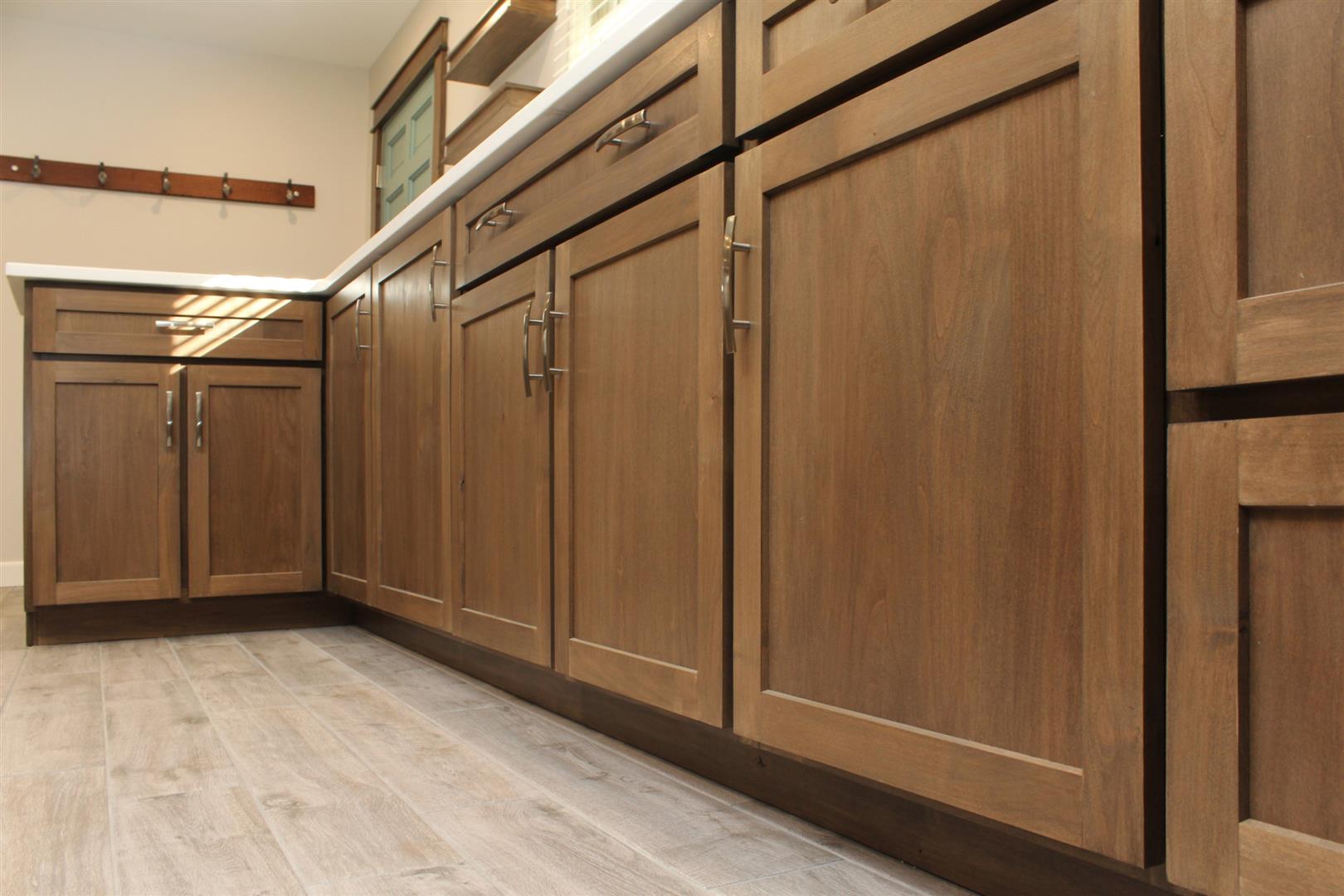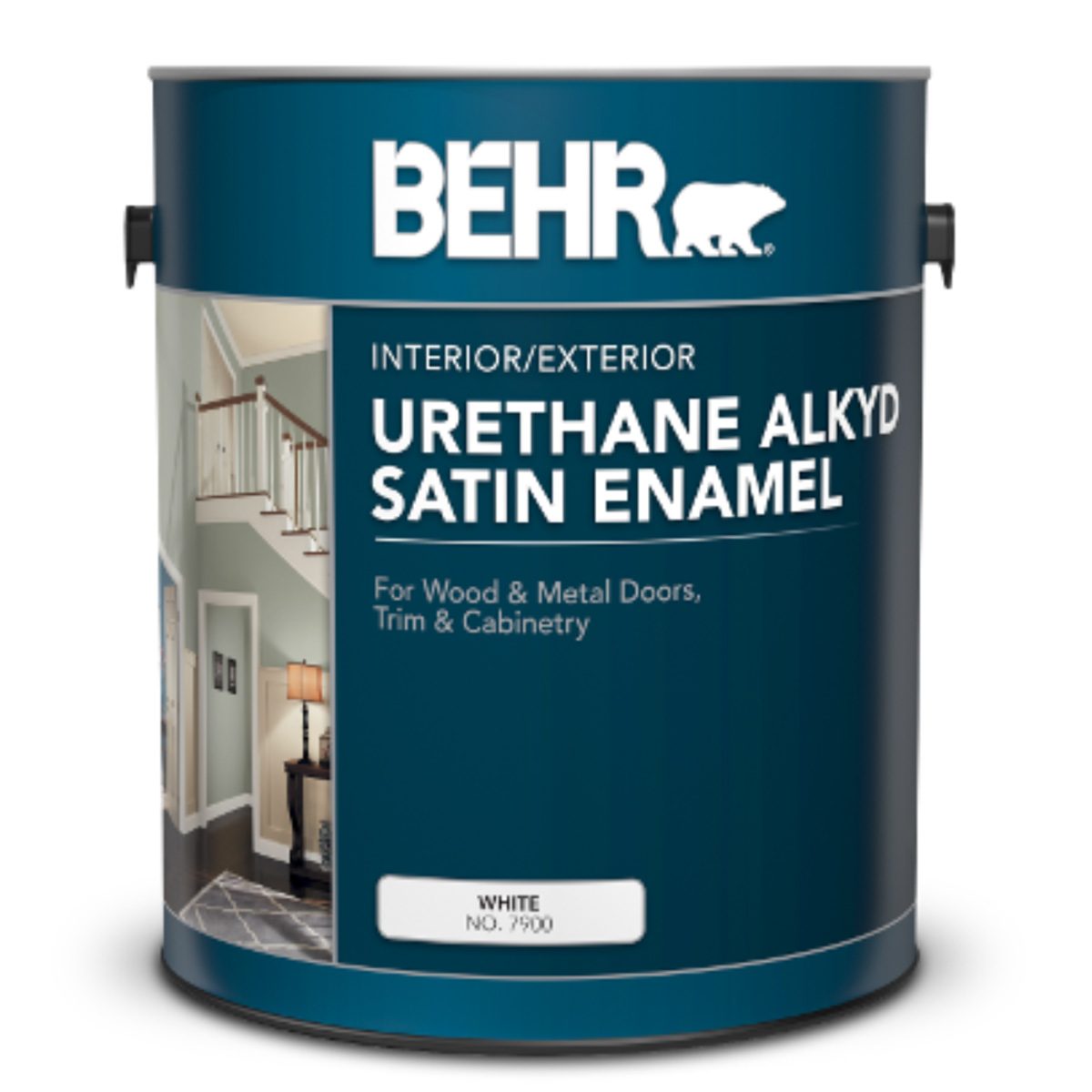Understanding Water-Based Finishes for Kitchen Cabinets

Water-based finishes have become increasingly popular for kitchen cabinets due to their numerous advantages over traditional oil-based finishes. These finishes offer a combination of performance, environmental friendliness, and ease of application, making them a preferred choice for many homeowners and professional cabinetmakers.
Benefits of Water-Based Finishes
Water-based finishes offer several advantages over their oil-based counterparts.
- Low VOC Content: Water-based finishes are significantly lower in volatile organic compounds (VOCs) compared to oil-based finishes. This makes them a more environmentally friendly option, contributing to better indoor air quality.
- Faster Drying Time: Water-based finishes typically dry much faster than oil-based finishes, often within a few hours. This allows for faster project completion and reduces the risk of dust or debris settling on the wet finish.
- Easy Clean-Up: Water-based finishes are easily cleaned up with soap and water, eliminating the need for harsh solvents or chemicals. This simplifies the application process and reduces environmental impact.
- Improved Adhesion: Water-based finishes often exhibit better adhesion to various substrates, including wood, metal, and plastic. This ensures a durable and long-lasting finish that is less likely to peel or chip.
Properties of Water-Based Finishes
Water-based finishes possess unique properties that influence their performance and application.
- Drying Time: As mentioned earlier, water-based finishes dry significantly faster than oil-based finishes. The drying time can vary depending on factors such as humidity, temperature, and the specific product.
- Durability: Water-based finishes can offer excellent durability, comparable to oil-based finishes, when applied correctly. However, it’s essential to choose a finish with a high-quality formulation and apply multiple coats for optimal protection.
- VOC Content: Water-based finishes are generally considered low-VOC, emitting significantly fewer harmful chemicals into the air compared to oil-based finishes. This contributes to improved indoor air quality and a healthier environment.
Popular Water-Based Finishes for Kitchen Cabinets
Several popular water-based finishes are commonly used for kitchen cabinets, each offering specific characteristics and benefits.
- Acrylic Latex: Acrylic latex finishes are a versatile and durable option for kitchen cabinets. They offer excellent adhesion, good resistance to moisture and stains, and a smooth, easy-to-clean surface.
- Polyurethane: Water-based polyurethane finishes are known for their exceptional durability and resistance to scratches, abrasions, and chemicals. They offer a high-gloss finish that enhances the natural beauty of wood.
- Epoxy: Epoxy finishes are extremely durable and resistant to moisture, chemicals, and heat. They are often used for high-traffic areas and surfaces that require exceptional protection.
Selecting the Best Water-Based Finish for Your Kitchen Cabinets

Choosing the right water-based finish for your kitchen cabinets is crucial for achieving a beautiful and durable result. The finish you select will significantly impact the appearance, longevity, and ease of maintenance of your cabinets.
Factors to Consider When Choosing a Water-Based Finish
When selecting a water-based finish for your kitchen cabinets, several factors should be considered:
- Cabinet Style: The style of your cabinets can influence the type of finish that would be most appropriate. For example, traditional cabinets often benefit from a satin or semi-gloss finish, while modern cabinets may look better with a matte or eggshell finish.
- Desired Finish: The level of sheen you desire will affect the overall look of your cabinets. Matte finishes provide a subtle, low-sheen look, while gloss finishes offer a high-shine and reflective appearance. Satin finishes fall somewhere in between, providing a soft, understated sheen.
- Budget: Water-based finishes vary in price, so it’s essential to consider your budget. Some high-quality finishes can be expensive, while more affordable options are available.
Comparison of Different Water-Based Finishes
Here is a comparison of the pros and cons of different water-based finishes commonly used for kitchen cabinets:
- Acrylic Lacquer: Acrylic lacquer is a popular choice for kitchen cabinets due to its durability, ease of application, and quick drying time. It offers excellent resistance to scratches, stains, and moisture, making it suitable for high-traffic areas. However, it can be more expensive than other water-based finishes.
Acrylic lacquer is a good option for those seeking a durable, long-lasting finish that is easy to clean.
- Polyurethane: Polyurethane is another durable water-based finish that provides excellent protection against scratches, abrasions, and water damage. It is available in both oil-based and water-based formulations, with water-based polyurethane offering a faster drying time and lower odor. Polyurethane can be used on both bare wood and previously painted surfaces.
Polyurethane is a versatile finish that can be used on various surfaces and provides excellent protection against wear and tear.
- Epoxy: Epoxy is a durable and moisture-resistant finish that is often used for high-traffic areas like kitchen countertops and floors. However, it can be challenging to apply and requires careful preparation of the surface.
Epoxy is a good option for those seeking a durable, waterproof finish, but it requires careful application.
- Milk Paint: Milk paint is a natural, environmentally friendly finish that offers a unique, aged look. It is easy to apply and can be layered for a distressed effect. However, it is not as durable as other water-based finishes and may require a sealant for added protection.
Milk paint is a good option for those seeking a natural, environmentally friendly finish with a vintage look.
Preparing Kitchen Cabinets for Painting
Proper preparation is crucial for achieving a smooth and durable finish on your kitchen cabinets. Here are some essential steps to prepare your cabinets for painting:
- Cleaning: Thoroughly clean your cabinets with a degreaser or trisodium phosphate (TSP) solution to remove dirt, grease, and grime. This ensures the paint adheres properly to the surface.
- Sanding: Sand your cabinets with fine-grit sandpaper (120-180 grit) to create a smooth surface and remove any imperfections. This helps the paint adhere evenly.
- Priming: Prime your cabinets with a high-quality primer designed for water-based paints. This helps to seal the surface, improve adhesion, and prevent the wood from bleeding through the paint.
Applying and Maintaining Water-Based Finishes on Kitchen Cabinets: Best Water Based Finish For Kitchen Cabinets

Applying a water-based finish to your kitchen cabinets can significantly enhance their durability, aesthetics, and longevity. Water-based finishes offer several advantages, including low VOC emissions, quick drying times, and ease of application. However, achieving a professional-looking finish requires careful preparation, proper application techniques, and appropriate maintenance.
Applying Water-Based Finishes to Kitchen Cabinets
To achieve a smooth and even finish, it’s crucial to follow a systematic approach when applying water-based finishes. The following steps Artikel the process, encompassing brushing, rolling, and spraying techniques:
- Preparation: Begin by thoroughly cleaning the cabinets with a mild detergent and water, ensuring all surfaces are free of dust, grease, and debris. Sand the cabinets using progressively finer grits of sandpaper (120, 180, and 220 grit) to create a smooth and uniform surface. This process removes imperfections and helps the finish adhere properly. After sanding, wipe down the cabinets with a tack cloth to remove any remaining dust particles.
- Application: Choose a well-ventilated area for applying the finish. Water-based finishes typically dry quickly, so it’s essential to work in small sections to avoid the finish drying before you can blend it smoothly. For brushing, use a high-quality natural bristle brush designed for water-based finishes. Apply thin, even coats in the direction of the wood grain, overlapping each stroke slightly to ensure a smooth finish. For rolling, use a high-quality foam roller designed for water-based finishes. Roll the finish in a smooth, even motion, overlapping each stroke slightly. For spraying, use a HVLP (high-volume, low-pressure) sprayer designed for water-based finishes. Apply the finish in thin, even coats, maintaining a consistent distance from the surface. Allow the finish to dry completely between coats, following the manufacturer’s recommendations.
- Drying and Curing: Water-based finishes typically dry to the touch within 30 minutes to an hour, but they require a longer curing time to achieve full hardness and durability. The manufacturer’s instructions should provide specific drying and curing times for the chosen finish. Avoid touching or using the cabinets for at least 24 hours to allow the finish to cure properly.
Preventing Brush Strokes and Drips
While water-based finishes offer convenience, they can be prone to brush strokes and drips if not applied correctly. Here are some tips to prevent these common issues:
- Thin the Finish: Thinning the finish slightly with water can improve its flow and reduce brush strokes. However, always follow the manufacturer’s instructions for thinning ratios. Excessive thinning can compromise the finish’s durability.
- Use a High-Quality Brush: A good-quality brush with soft, natural bristles will help to minimize brush strokes. Avoid using cheap brushes that leave behind bristles or create uneven coats.
- Apply Thin Coats: Apply the finish in thin, even coats rather than thick, heavy coats. Thin coats allow the finish to dry evenly and minimize the risk of drips.
- Avoid Overworking the Finish: Once the finish is applied, avoid overworking it. Excessive brushing or rolling can cause streaks and brush marks.
- Wipe Up Drips Immediately: If drips occur, wipe them up immediately with a clean, damp cloth. Allow the finish to dry completely before applying the next coat.
Maintaining Water-Based Finishes on Kitchen Cabinets, Best water based finish for kitchen cabinets
To ensure the longevity and beauty of your kitchen cabinets, it’s essential to maintain the water-based finish properly. Follow these recommendations:
- Clean Regularly: Clean the cabinets regularly with a mild detergent and water, avoiding harsh cleaners or abrasives that can damage the finish. Wipe the cabinets dry with a soft cloth to prevent water spots.
- Protect from Heat and Moisture: Avoid exposing the cabinets to excessive heat or moisture, as this can cause the finish to deteriorate. Use pot holders and trivets to protect the surfaces from hot pots and pans.
- Repair Scratches and Chips: Minor scratches and chips can be repaired using a touch-up pen or marker that matches the finish color. For deeper scratches or chips, consider contacting a professional refinisher.
- Recoat Periodically: Over time, the finish may become dull or scratched. To refresh the finish, you can recoat the cabinets with a new layer of water-based finish. Follow the manufacturer’s instructions for preparing the surface and applying the finish.
Best water based finish for kitchen cabinets – A water-based polyurethane is a great choice for kitchen cabinets, giving them a durable and easy-to-clean finish. If you’re looking for a more unique touch, consider adding a decorative element like horse mirrors for bedrooms to your kitchen, which can bring a touch of rustic charm.
Whatever you choose, make sure you use a quality water-based finish to keep your kitchen cabinets looking their best.
Choosing the right finish for your kitchen cabinets is a big deal, man. You want something that looks good, protects the wood, and is easy to clean. Water-based finishes are a popular choice, especially if you’re going for a natural look.
They’re also a good option if you’re sensitive to strong fumes. Speaking of natural looks, check out this cooking apple green bedroom – it’s got this awesome earthy vibe. Anyway, back to the cabinets. A water-based polyurethane is a good all-around choice for kitchen cabinets.
It’s durable, easy to apply, and cleans up with soap and water.